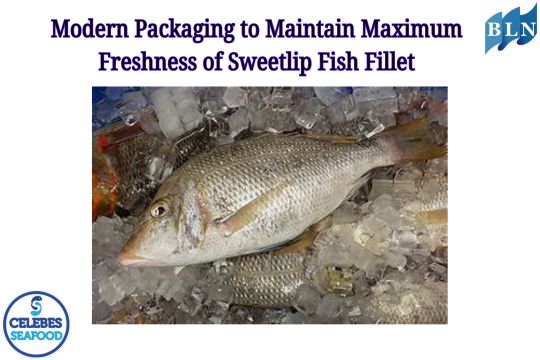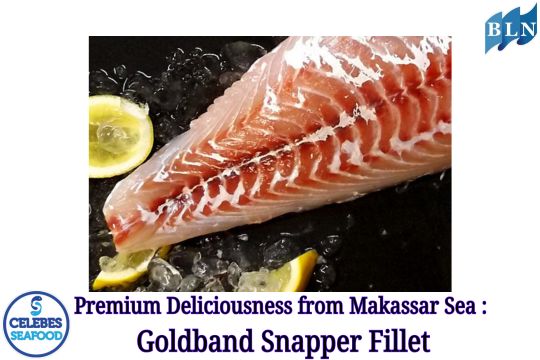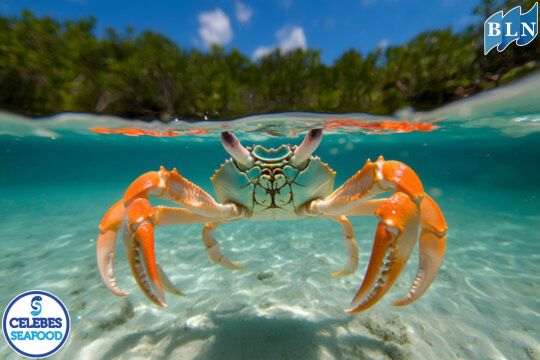Impact of Climate Change on the Life and Productivity of Pearl Oysters
By. Edi - 15 May 2025.jpg)
lautnusantara.com Pearl oysters, members of the phylum Mollusca and class Bivalvia, are fascinating marine creatures. More than just producers of dazzling precious beads, pearl oysters have an important ecological role and a unique life cycle. The beauty of natural pearls has captivated humans for centuries, becoming a symbol of luxury and elegance. However, behind its dazzling luster, the life of pearl oysters (Pinctada spp.) is now increasingly threatened by the impacts of global climate change.
A. Increasing Sea Water Temperature: Thermal Stress and Physiological Disorders
One of the most obvious impacts of climate change is the increase in sea water temperature. Pearl oysters are poikilothermic organisms, meaning their body temperature is highly dependent on the ambient temperature. Increasing sea water temperature above the optimal tolerance limit can cause thermal stress in pearl oysters. This stress can trigger various physiological disorders, including:
- Decreased Metabolic Rate: Temperatures that are too high can disrupt the normal metabolic processes of oysters, reducing the efficiency in digesting food and producing the energy needed for growth and reproduction.
- Increased Susceptibility to Disease: Thermal stress can weaken the immune system of pearl oysters, making them more susceptible to attack by bacteria, viruses, and parasites. Disease outbreaks can cause mass mortality and significant losses in aquaculture.
- Reproductive Disorders: Unsuitable water temperatures can disrupt the reproductive cycle of pearl oysters, from gonad maturation to spawning and larval development. This can lead to a decline in natural populations and the availability of seed for aquaculture.
- Bleaching: Although bleaching is more commonly known in corals, pearl oysters can also experience similar conditions due to environmental stress, including high temperatures. Bleaching in oysters can indicate poor health and a decreased ability to produce quality pearls.
B. Ocean Acidification: A Threat to Shell and Pearl Formation
The ocean absorbs most of the carbon dioxide (CO₂) emissions from human activities. Increased CO₂ dissolved in seawater causes a decrease in pH, known as ocean acidification. This acidic condition has serious impacts on pearl oysters, especially in the process of shell and pearl formation, both of which are composed of calcium carbonate (CaCO₃).
- Difficulty in Shell Formation: More acidic seawater reduces the availability of carbonate ions that mussels need to build and maintain their shells. Thin, weak shells make mussels more vulnerable to predators and physical damage.
- Disruption of Pearl Formation: The pearl formation process also relies on the mussel’s ability to precipitate calcium carbonate in the form of nacre around the implanted nucleus or natural irritants. Ocean acidification can inhibit this process, resulting in pearls of poor quality, smaller size, or even failure to form pearls.
C. Changes in Extreme Weather Patterns: Habitat and Culture Infrastructure Destruction
Climate change is also leading to an increase in the frequency and intensity of extreme weather events, such as storms, high waves, and flooding. These events can have a direct impact on the life and productivity of pearl mussels, especially in coastal aquaculture.
- Natural Habitat Destruction: Storms and high waves can destroy the natural habitat of pearl mussels, destroying the substrate to which they are attached and disrupting the balance of the ecosystem.
- Damage to Culture Infrastructure: Pearl mussel culture facilities, such as rafts, ropes, and nets, are highly susceptible to damage from extreme weather. The loss of material and the loss of mussel stocks can result in significant economic losses.
- Salinity Changes: Floods and extreme rainfall can cause drastic changes in seawater salinity in cultivation areas, which can cause physiological stress to pearl oysters and increase the risk of mortality.
D. Implications for Industry and Ecosystem
The impact of climate change on pearl oysters not only threatens the sustainability of the pearl industry which has high economic value in various countries, including Indonesia. Furthermore, the decline in pearl oyster populations can have broader ecological consequences. Pearl oysters act as natural filters for seawater, helping to maintain water quality and the balance of healthy coral reef and seagrass ecosystems. Their population decline can disrupt the functioning of these ecosystems and have a negative impact on marine biodiversity as a whole.
E. Mitigation and Adaptation Efforts
Recognizing this serious threat, comprehensive mitigation and adaptation efforts are needed to protect pearl oysters and related industries. Global mitigation efforts to reduce greenhouse gas emissions are key to addressing the root causes of climate change. Meanwhile, adaptation measures at the local and regional levels are also important, including:
- Appropriate Farming Site Selection: Identifying farming sites that are more resilient to temperature changes and acidification.
- Development of Resilient Farming Techniques: Implementing farming practices that can reduce stress on oysters, such as optimal density management and strict water quality monitoring.
- Climate-Resilient Mussel Breeding: Conducting research to identify and develop pearl oyster strains that are more tolerant to high temperatures and acidic conditions.
- Natural Habitat Restoration: Protecting and restoring natural pearl oyster habitats to increase the resilience of wild populations.
- Institutional and Policy Strengthening: Developing policies that support sustainable farming practices and pearl oyster resource conservation in the face of climate change.
Climate change is a real threat to the life and productivity of pearl oysters. Rising sea temperatures, ocean acidification, and changing extreme weather patterns can disrupt the physiology, reproduction, and habitat of oysters, ultimately impacting pearl production and the health of marine ecosystems. Immediate, coordinated mitigation and adaptation actions are essential to protect these marine “treasures” and ensure the future sustainability of the pearling industry and the ecosystems that depend on it.
If you are interested in our product WAHOO NATURAL CUT FILLET SKIN ON, WAHOO QUARTER CUT FILLET SKIN ON please do not hesitate to contact us through email and/or whatsapp.
.jpg)






